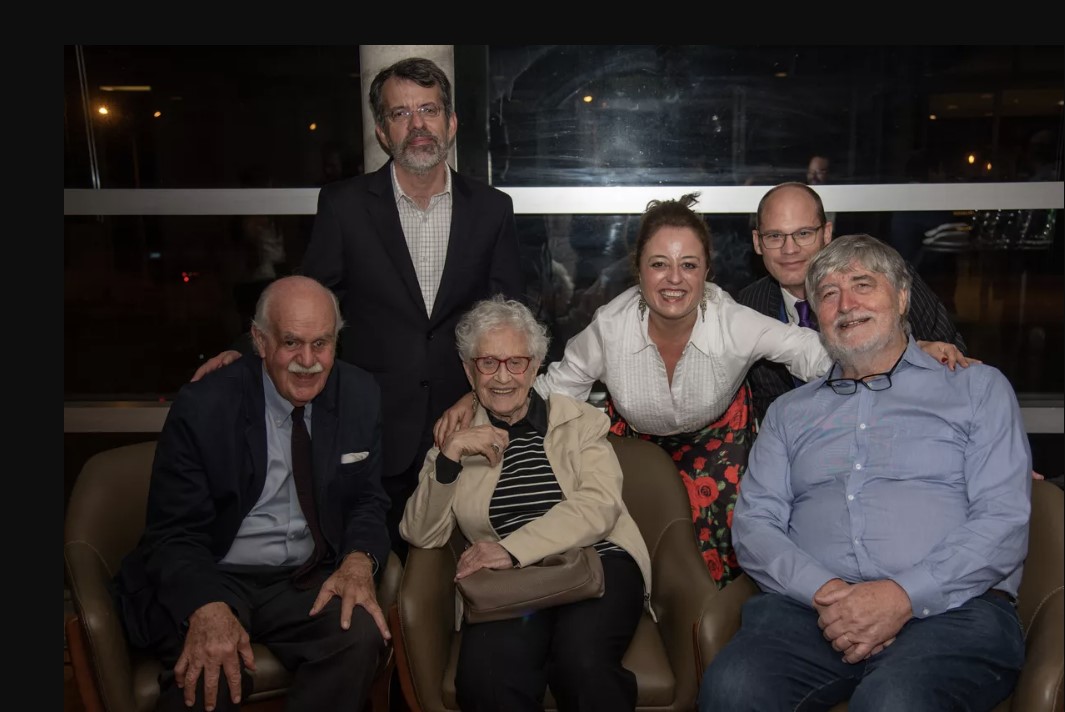Cases & Voices
- Ixchel Pérez
Proud of our female pioneers: Ida Holz, “mother of the Internet” in Latin America

Vint Cerf calls her the "mother of the internet". A key figure in the establishment of the first node of the Internet in Uruguay, an advocate and a leader in the development of an independent Latin American networking industry. This is Ida Holz.
(Source: GEÁNT) From a Jewish family of Polish origin, Ida is of the first generation of computer engineers in Uruguay. After spending a few years in the Israeli army and working on a kibbutz, she returned home for her university studies. In 1964, she married the love of her life, Anhelo Hernández (1922 - 2010), a Uruguayan contemporary painter whose work earned world-wide recognition and is exhibited in several museums in Uruguay, Cuba, and Russia. In 1973, after graduating, she left with her family to live in Mexico in exile, seeking refuge from the military dictatorship in her home country. In Mexico, she established herself as an expert in the informatic networking community.
After 12 years in exile, she returned to Uruguay in 1987 with a vision and determination that access to information is key for the development of a society. Uruguay is the country with the smallest population in Latin America, but with a high level of education, especially public education which has been secular and free of charge for over a century now. However, with such a scarce population, researchers were isolated and struggled to communicate and collaborate in the region as well as globally. That same year, she became Director of the Central Information Service (SECIU) at Universidad de la República and, while there, she led the team that created the Uruguayan Academic Network (RAU) which got to register the .uy domain in 1991.
Up until then, emails were only exchanged between engineers at the Computer Institute of the Uruguayan School of Engineering and the Universidad de Buenos Aires. They would have to make a couple of telephone calls per day to send out the emails stored in their servers and receive incoming ones - a time consuming process, yet a powerful and promising tool. In fact, it did not take long for teachers at the universities to want to be connected and receive emails as well, but as the number of users increased significantly, the Institute's servers started to get too crowded. So, Ida and her team were asked to find a solution and so created RAU and started working directly with UUNET, the biggest ISP at the time. It took a few years, as a direct link to the USA was required, but in 1995 the Internet was officially introduced in Uruguay, opening the doors to endless collaboration opportunities for local students and researchers with their global counterparts.
Ida's contributions do not stop at national level. In 1991, the “First Inter-American Networking Workshop” was held in Rio de Janeiro. There, American and European personalities introduced for the first time the idea to build a Latin American organisation, which would, however, be led by a foreign authority. Ida did not agree: “If we could not govern ourselves and choose our own leaders, there was no point in creating anything”. After a long sleepless night, her Latin American colleagues and Ida had created the Latin America and Caribbean Network Forum. Although it started with nothing - there was still no Internet at the time - the forum believed in the power of collaboration, and it worked to lay down the fundamentals for the development of today's Internet in the region. Since then, she has been instrumental in establishing three other keystone regional organisations - the Latin American and Caribbean Internet Address (LACNIC), the Latin American and Caribbean Association of Country Code Top-Level Domains (LACTLD), and the Latin American regional research and education network, RedCLARA.
Her selfless dedication and the time she has invested - and continues to do so - in the development and improvement of ICT networks in the region led her to be inducted to the Internet Hall of Fame in 2013, making her the first Latin American woman to be awarded. This was not the only award she received. In 2009, she had been awarded the Lifetime Achievement Award granted by LACNIC. In 2014, she received the Moña de Honor at the public primary school she attended, in celebration of the power of education and vocation of teachers. In 2015, the Uruguayan postal service honoured her by issuing two stamps of their “Highlighted Personalities” series in her honour.
Today, at 88, she is still very much involved in the community and is currently writing a book on the story of academic networks in Latin America together with Michael Stanton, one of the founders of the Brazilian NREN, RNP. Ida is a strong advocate for an exclusive network for research and education in Uruguay to improve the connectivity for local students and researchers. It is hard to imagine a world without that. The arrival of the Internet in the region has changed lives for the better and it has become a significant part of everyday life for educators and researchers. A powerful tool to plan, execute, and distribute their work, it enables incredible progress in all areas of human life.
A humble and visionary leader, Ida is a true pioneer behind the existence and evolution of the Internet in Latin America and an inspiration to the next generation of computer scientists and Internet champions. She is the mother of Ayara, a ballerina who performed all over Latin America and Europe before returning to Montevideo to work as a teacher, and Arauco, an award-winning filmmaker and cinematographer. She is grandmother to three children who are her joy.
Article originally published in Connect 43 - Geánt. Author: Silvia Fiore.




